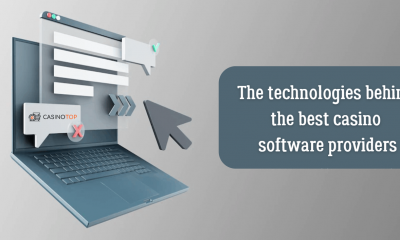This post tells you everything you need to know about the NoCode movement, its advantages, and the most popular tools.
What is NoCode?
It is a movement that wants to democratize digital creation, facilitating the creation of applications and software for those who do not have programming skills. To do so, they use tools that allow the creation of apps and websites without the need to know a programming language and replace those languages with more visual programming techniques. These tools are known as WYSIWYG (What you see is what you get) tools. An example of that would be when you drag & drop on a page or how Elementor works in WordPress to make it more transparent. So, these tools and platforms have a graphical interface that works with programming without code and allows the user to see in real-time what they are doing and how their program will look without having to write any code. You build a website as if it were a puzzle through modular elements to give you an idea.
Differences with Low Code
We could say that Low Code is the predecessor philosophy of No Code since it was also a movement that aspired to the same goal. But the idea was not to eliminate the need for programmers, but rather that any professional could create software without code or with as little code as possible. Is one better than the other? As in almost all programming cases, choosing one tool or the other depends on our objective. Let’s see what the differences are:
Creating an app or web with a No Code tool is much simpler than using a Low Code one. No Code tools can be managed by non-technical people, while Low Code requires basic programming knowledge. Because Low Code platforms allow you to enter your code, you have more flexibility and can create more complex products. There are Low Code platforms that let you create mobile applications natively, i.e., directly for use on mobile devices. Low Code tools can be integrated with third-party systems.
What are the Advantages of the NoCode Movement?
Let’s see why becoming an expert in No-Code tools is a good idea.
1. It takes less time to do a job
Working with NoCode products is ideal for meeting small clients’ needs and doing jobs that are not very complex. For example, developing a page with this technology will be much faster than a programming language, so you could finish more jobs in less time, making the business more profitable.
2. It is more convenient for companies
It is also convenient for companies to approach the NoCode movement since hiring a programmer to develop software can be very expensive. Still, someone who works with these tools will charge much less since the work is more straightforward and takes less time.
3. It is easier to make changes and maintenance
When working with complex languages, a change in one component can break the whole application. Making changes is difficult and time-consuming. An application created with NoCode will be simple to modify, and modifications do not risk breaking the rest of the application.
4. You are more likely to realize your ideas
Many times we have ideas that we discard because we don’t know to implement them. Well, that wouldn’t happen if you tried to carry it out with a more straightforward system that doesn’t require advanced knowledge.
What are the Most Used Tools in NoCode?
Thanks to the NoCode boom, hundreds of tools have already appeared that you can use to create different things, from applications to databases. Here are just 5 of the most popular ones.
1. Glide
Glide turns a Google Sheets sheet into a mobile application. Yes, this tool will have a mobile application in minutes. It is super simple, but it has several points against it. The first is that you can’t customize the styles too much, and the second is that it also has functional limitations, so if you were thinking of doing something a bit complex, you would most likely have to adapt your app to the capabilities that Glide gives you. Because of its simplicity, it is one of the best tools to get started in the NoCode world.
2. Bubble
The Bubble represents a giant leap if we compare it with Glide. This platform gives you almost infinite alternatives to create whatever you want. It translates into a much more complete tool, so you will be able to create more complex products, but you will also need to overcome a much longer and more demanding learning curve. Once you master Bubble, you can create all kinds of applications as if you were a professional programmer.
3. Shopify
Shopify is one of the most popular tools for building an e-commerce site. It is currently one of the main competitors of Woocomerce. It achieved this because building and updating an e-commerce site on Shopify is elementary. It also allows you to manage logistics and payments and provides good data analysis tools. Another feature that makes Shopify grow is its community, which constantly develops new solutions as new needs are detected.
4. Webflow
It is perhaps the most powerful solution of the NoCode movement, which is why it became one of the most popular tools. It is even used by huge companies such as Dell and Rakuten. Webflow allows you to create websites through a straightforward visual interface. In addition, it will enable fully customizing these websites by adding classes to the elements, introducing custom code, and creating animations without knowing how to program in JavaScript. The disadvantage of Webflow is that it is so complex that it is not easy to learn how to use it entirely and take advantage of all its functions.
5. Airtable
Airtable is an online tool that allows you to create relational databases. The advantage between a database and a simple Excel is that in a database, besides storing data, it will enable you to design and save relationships between them. With Airtable, you can create complex databases, for example, the billing system of your business.
Examples of applications created with No Code
After everything I told you, you can imagine millions of websites and programs are already created with this technology. In the sites of the tools I mentioned, you can see some of the works that were made using them. For example, here is a page with some areas made with Webflow. An excellent example of the quality of a product made with NoCode is Plato, a platform designed to connect engineers with mentors. This platform was built using Bubble. I recommend you look at how the PGA (the US golf association) used Glide to manually digitize a process they were doing and get feedback from the app’s users.
Is this the End of the Programmers?
No, although the No Code movement and the incorporation of No Code tools are on the rise, it is likely that programs made with traditional languages will soon coexist with components made without code. But the No Code movement will make it easier for people of other professions, like a salesman, paper writer, or freelancer, to immerse themselves in the dreamlike digital world in an impulse to change careers. So, programmers will continue to be required for complex software, and NoCode solutions will be used for simple applications.













